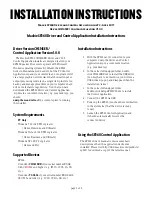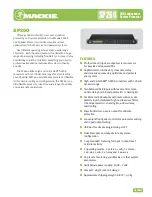
Operating Precautions for V
R
4133
TM
No. 7
Disconnect at the end of PCI burst cycle
(Specification change notice)
Details
The last transfer of a PCI burst cycle is regarded as a disconnect cycle by VR4133, if STOP# and
TRDY# are both asserted during the last-but-one data cycle, as shown in the following figure:
D0 ,D1,D2 are burst data; D3 is last burst data and D2 is last-but-one burst data.
TRDY# and IRDY# are both asserted during D2 and D3. So data transfer of D2 and D3
is finished. But because of this restriction, VR4133 mis-interpreting data phase as if it is
disconnected at D2. Therefore D3 cycle is performed again.
Therefore one of the following workarounds must be implemented:
(1) Do not use PCI-DMA function.
(2) Do not use LD and SD instructions and do not locate PCI memory and I/O areas in
cached memory region of the CPU, so that burst cycles as shown above are not
generated.
PCLK
AD
FRAME#
IRDY#
TRDY#
STOP#
mis-understanding as disconnect
D1
D0
A
+0
unnecessary
cycle
D
3
A+12
D3
D2
A+8
No. 8
Ethernet: receive short packet
(Documentation errata)
Details
The packet size of VLAN is designed for minimum 68 bytes length, but this is not described in
user’s manual.
If a VLAN packet is received with a length of 64-67-byte (less than 68 byte), VR4133 will be
judged it as a short packet, and a packet will be discarded.
Using a packet with a length of less than 68 bytes can be realized by the following method:
Set a ‘special value’ into VLTP (15:0) of VLTP0/1 (0x0f001464 / 0x0f001764) register. The
‘special value' has not to be a VLAN type, which you want to receive. The data can be received
as a usual packet, and judged as a VLAN packet by software. In this case, following items are
different from usual VLAN procedure.
(1)
All the VLAN packets recognized by the TYPE field of receiving descriptor status are
described as normal packets.
(2)
The statistics counter R64C0/1, R127C0/1, R255C0/1, R511C0/1, R1KC 0/1 and
RMAXC0/1 count normal packets.
Customer Notification
7




























